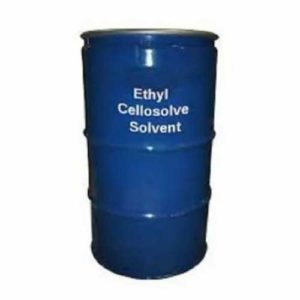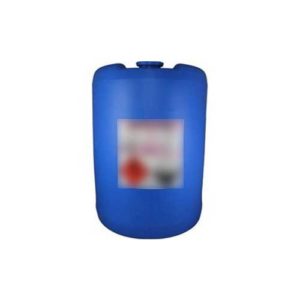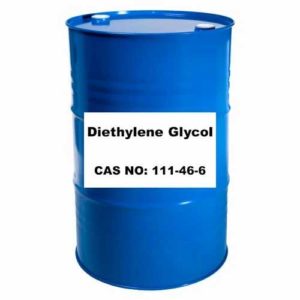POLY VINYL ALCOHOL-C2H4O
ABOUT:
The method of making polyvinyl alcohol (PVA) is known as hydrolysis, and it entails the reaction of vinyl acetate with water in the presence of a catalyst. The following steps are often included in the process:
Polymerization: Vinyl acetate monomer is first polymerized under controlled conditions to produce polyvinyl acetate (PVAc) with a desired degree of polymerization.
Hydrolysis: The PVAc is then partially hydrolyzed in the presence of an alkaline catalyst, such as sodium hydroxide, to break some of the ester bonds and replace them with hydroxyl (-OH) groups. This reaction produces PVA, which has varying degrees of hydrolysis depending on the conditions used.
Filtration and drying: The PVA is then filtered, washed, and dried to remove any remaining catalyst, unreacted monomer, or impurities.
PHYSICAL PROPERTIES:
Appearance: COLOURLESS-TO-WHITE SOLID
Odor: Odorless
Density: 1.19-1.31 g/cm³
pH: range of 5.0 to 6.5
Boiling point: 644 °F at 760 mmHg
Melting point: 212-267 °C
Flash Point: 79 °C
CHEMICAL PROPERTIES:
- PVA is a synthetic polymer composed of vinyl acetate monomer units that have undergone hydrolysis, resulting in the formation of alcohol groups (-OH) along the polymer chain.
- PVA is highly hydrophilic, meaning that it readily interacts with water and other polar solvents.
- PVA is a thermoplastic polymer, meaning that it can be melted and re-formed into different shapes when heated to its melting point.
- PVA is relatively chemically stable and is resistant to most acids, alkalis, and organic solvents.
- PVA is highly soluble in water and forms a clear solution, making it ideal for use in many applications where a clear, transparent coating or adhesive is required.
APPLICATIONS:
TEXTILE INDUSTRY:
- To increase the strength, flexibility, and abrasion resistance of the yarns, PVA is employed as a warp sizing agent. Moreover, it lessens weaving-related friction between the yarns and the loom.
- PVA is employed in textile printing as a thickening and binder to enhance the print quality and colour fastness of the printed cloth.
- PVA is used as a finishing agent to increase the fabric’s suppleness, durability, and resistance to wrinkles. Moreover, it serves as a coating agent to give the cloth water- and flame-retardant properties.
PAPER INDUSTRY:
- To increase the tensile strength, printability, and durability of paper, PVA is used as a coating agent.
- Paper-to-paper and paper-to-other-materials bonding uses PVA as an adhesive.
- When making corrugated boxes, cartons, and other paper goods, PVA adhesives are employed.
- In the paper industry, PVA is employed as a release agent to stop paper from adhering to rollers and other production equipment.
- PVA is a substance that is used to make bags and pouches, among other packaging items.
CONSTRUCTION INDUSTRY:
- To increase the adhesive qualities of cement and mortar, PVA is employed as a bonding agent.
- PVA is a substance added to concrete to increase workability and lessen cracking.
- PVA is a tile adhesive that helps tiles adhere better to walls and floors.
- PVA is a grout ingredient that is used to make grout more workable and adherent.
PACKAGING INDUSTRY:
- PVA is used to create water-soluble packaging for products like fertiliser, detergent, and others.
- PVA is a packing glue that is used with cardboard, paper, and plastic films.
- Transparent, flexible films for food and other product packaging are made using PVA.
PHARMACEUTICAL INDUSTRY:
- PVA is used as a tablet coating agent to improve the appearance, stability, and swallowability of tablets.
- To increase the stability and solubility of pharmaceutical formulations, PVA is utilised as an excipient.
- Eyedrops and other ophthalmic formulations are made using PVA. For the treatment of dry eye and other eye disorders, PVA-based formulations offer high biocompatibility and lubrication.
- PVA is used to make bandages for wounds that encourage healing and fight infection.
FOOD INDUSTRY:
- Producing edible films and coatings for fruits, vegetables, and other food items requires the usage of PVA.
- PVA films offer an oxygen and moisture barrier that contributes to the product’s longer shelf life.
- Food items including sauces, soups, and gravies employ PVA as a thickening.
- In ice cream and other frozen desserts, PVA is a stabiliser. PVA makes the product’s smoothness and consistency better and aids in preventing the production of ice crystals.
COSMETICS INDUSTRY:
- PVA is a component in gels, mousses, and sprays used for hair style.
- Face masks that offer deep cleansing and exfoliation are made with PVA.
- In order to increase the varnish’s adherence and longevity, PVA is utilised in nail polish formulas.
- PVA is used into sunscreen formulations to increase the product’s water resistance and adherence. Moreover, PVA-based sunscreens offer a uniform, supple coating that shields the skin from UV radiation.
AGRICULTURE INDUSTRY:
- PVA is a seed covering substance that promotes germination while shielding the seed from pathogens and parasites.
- In order to stop soil erosion and enhance soil structure, PVA is employed as a soil stabiliser.
- To increase their effectiveness and lessen its negative effects on the environment, insecticides and herbicides are transported via PVA.
- Animal feed uses PVA as a binding agent to increase digestibility and decrease feed waste. Animal growth is aided by the slow-release of nutrients offered by PVA-based animal feed formulations.
3D PRINTING INDUSTRY:
- PVA is a seed covering substance that promotes germination while shielding the seed from pathogens and parasites.
- In order to stop soil erosion and enhance soil structure, PVA is employed as a soil stabiliser.
- To increase their effectiveness and lessen its negative effects on the environment, insecticides and herbicides are transported via PVA.
- Animal feed uses PVA as a binding agent to increase digestibility and decrease feed waste. Animal growth is aided by the slow-release of nutrients offered by PVA-based animal feed formulations.
SAFETY MEASURES:
- Personal protective equipment (PPE): Wear appropriate PPE such as gloves, safety glasses, and lab coats or protective clothing to avoid skin contact and inhalation of PVA.
- Ventilation: Work in a well-ventilated area or use fume hoods to avoid inhaling PVA dust or vapors.
- Storage: Store PVA in a cool, dry place, away from sources of ignition, and keep it in tightly closed containers to avoid exposure to moisture.
- Handling: Handle PVA with care, and avoid any contact with eyes, skin, or clothing. In case of contact, rinse immediately with water.
- Disposal: Dispose of PVA according to local regulations and avoid releasing it into the environment.
- First aid: In case of ingestion or inhalation of PVA, seek medical attention immediately. In case of skin contact, wash with plenty of water and soap. In case of eye contact, rinse with water for several minutes, and seek medical attention if necessary.






Reviews
There are no reviews yet.